How to find your individual practice
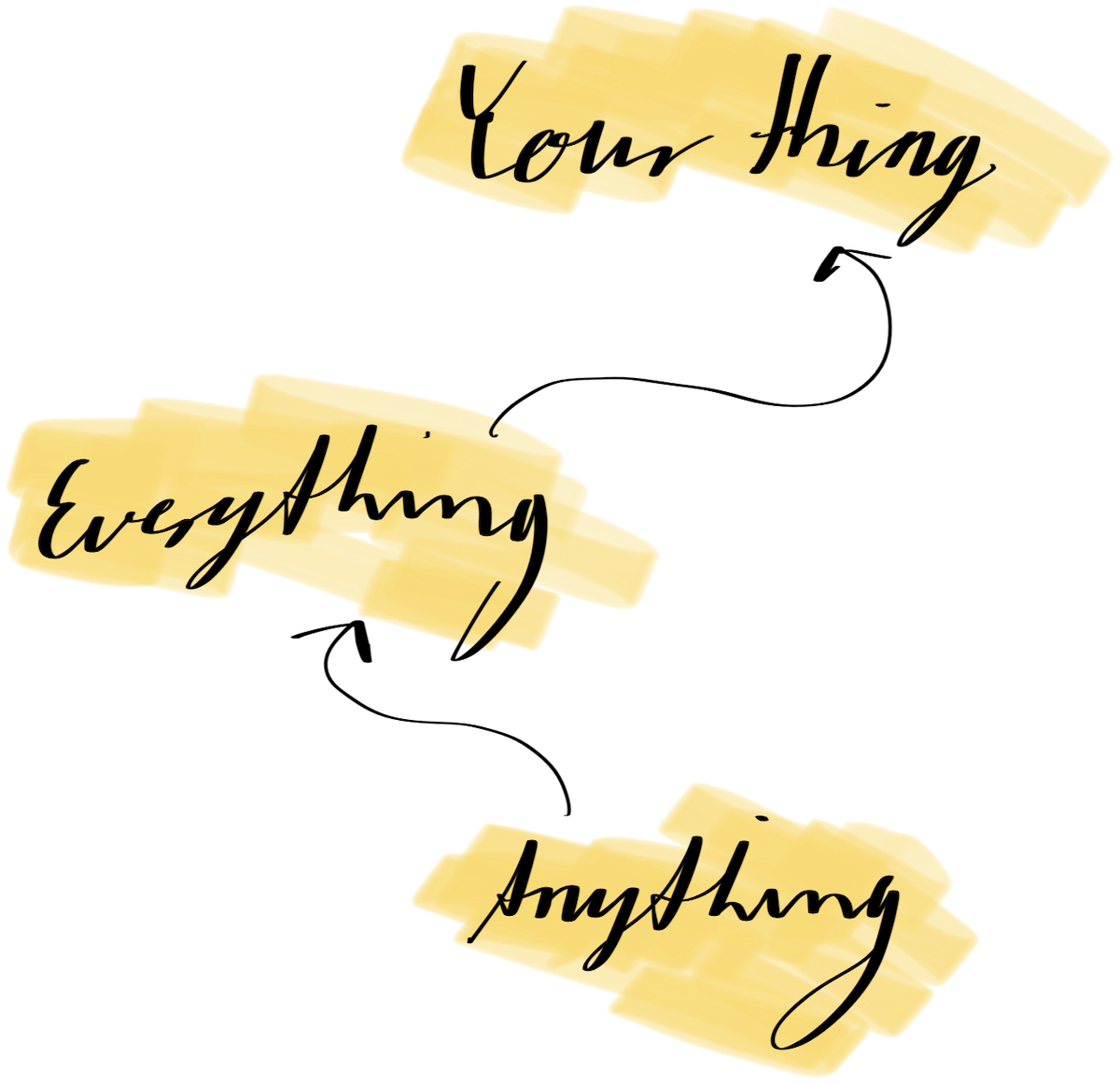
I personally believe that you should find your own individual way of doing things. And I also think this can take a long time. Because you need to expose yourself to enough different things to actually know what fits you well. That is part of the path of self-discovery I am talking about.
To discover yourself, I find that gathering a wide range of experiences is extremely helpful. Through experiences, you are not just exploring the world, you are also discovering yourself.
There is a caveat here: this should not be misunderstood as mere experience hopping. Jumping from one thing to another, never staying long enough, will keep you from discovering the deeper lessons of different disciplines.
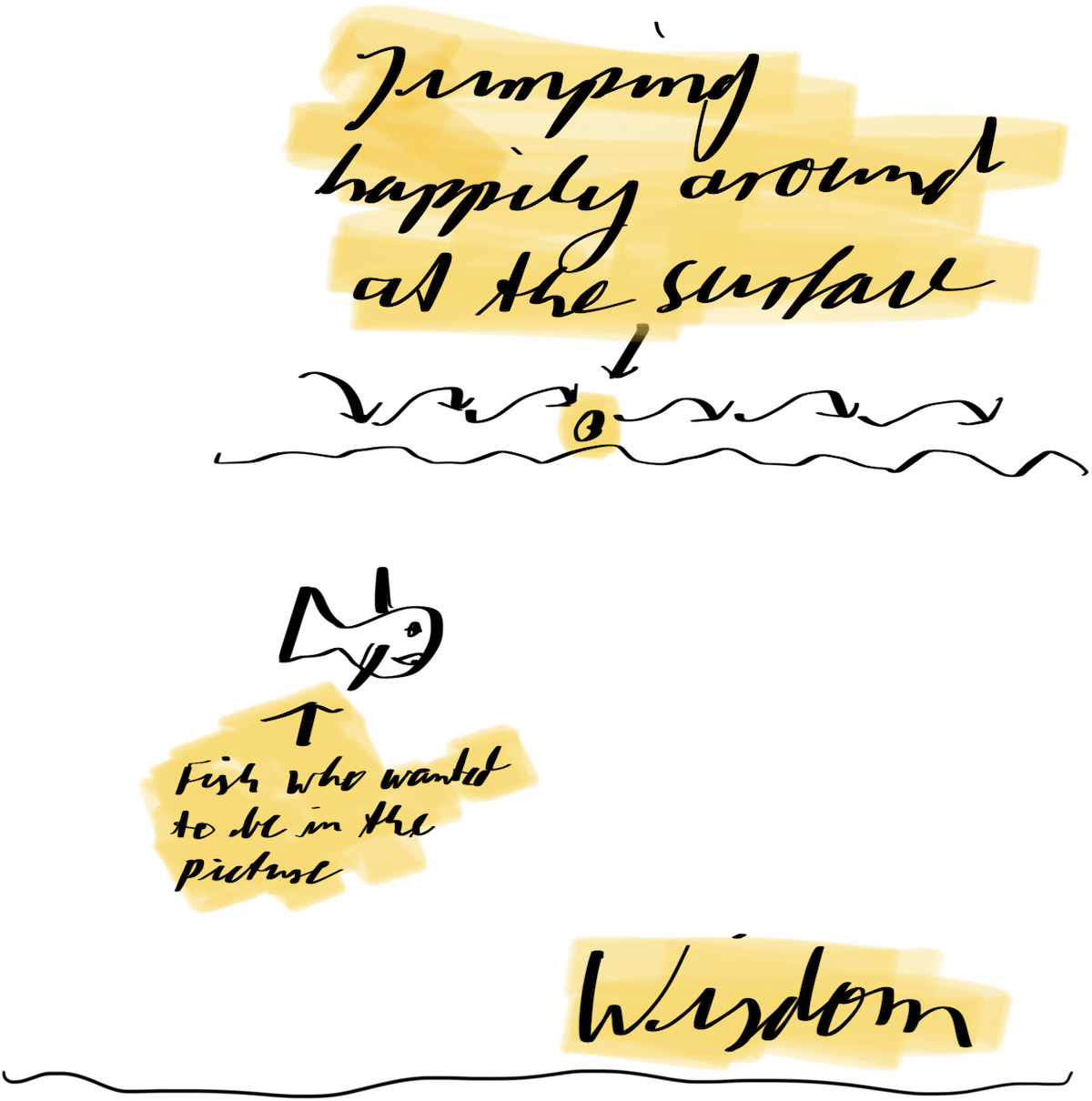
Practice means to stay with something long enough so that it can actually blossom. Only then do you start to experience the wisdom a discipline contains.
Every complex endeavor, such as movement, art, crafting, interaction, or meditation, has multiple entry points. And it does not make much sense to overthink which entry point is the "best." The point is to begin. Just start somewhere.
If you don't yet have experience, it is usually best to simply start with anything in that field of practice. From there you can diversify and individualize.
Note: information gathering is not the actual practice (although obviously it's a practice in itself, but you get the point). Gather enough information so you can start to practice. Practice time should be WAY MORE than information-gathering time.
To make the point of "just starting" a bit clearer, here are a few examples of what you could do to start a movement practice:
Examples of how to Start a Movement Practice
First Example:
- A) Walk 5-10k per day
- B) Go to a bouldering gym 1x per week
- C) Do some mobility work in the mornings and evenings (use some YouTube stuff or just go through different stretching positions and sitting on the ground positions that you come up with)
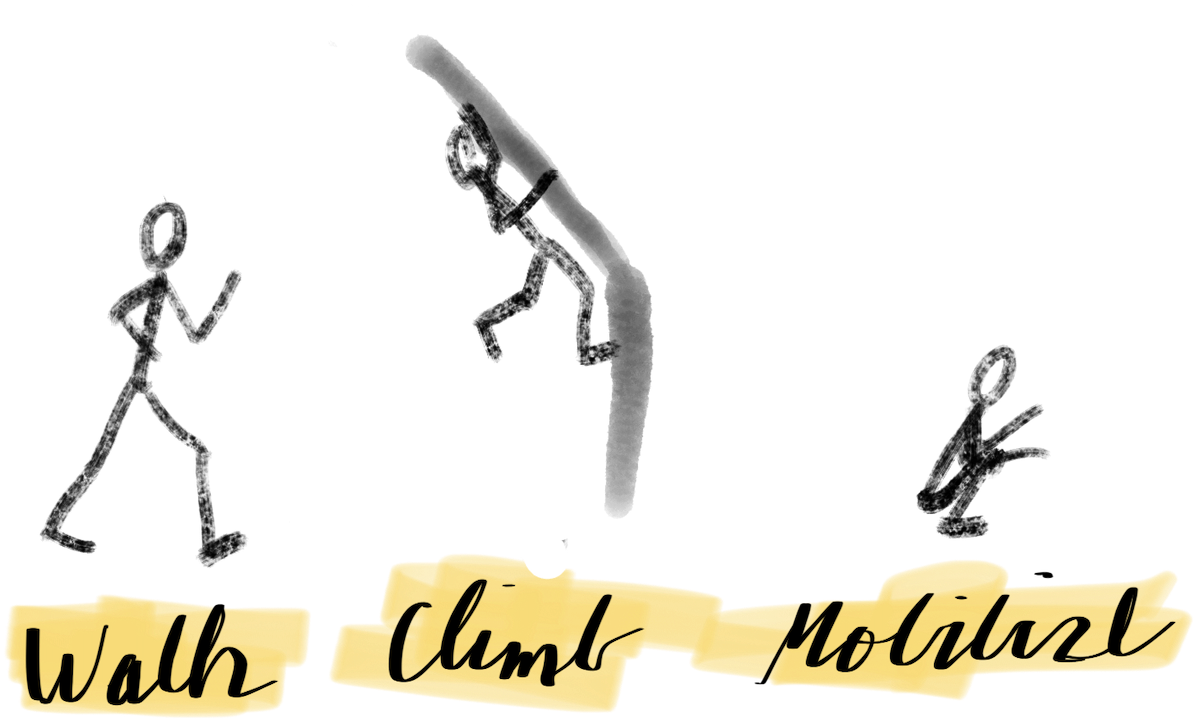
Second example:
- A) Almost every day, switch on some music you like and dance
- B) Go to a calisthenics park or something similar, hang, do squats, push-ups or anything you know. Stay for 30 minutes and aim to complete a substantial number of reps of the movement you know within that time. Break into a sweat.
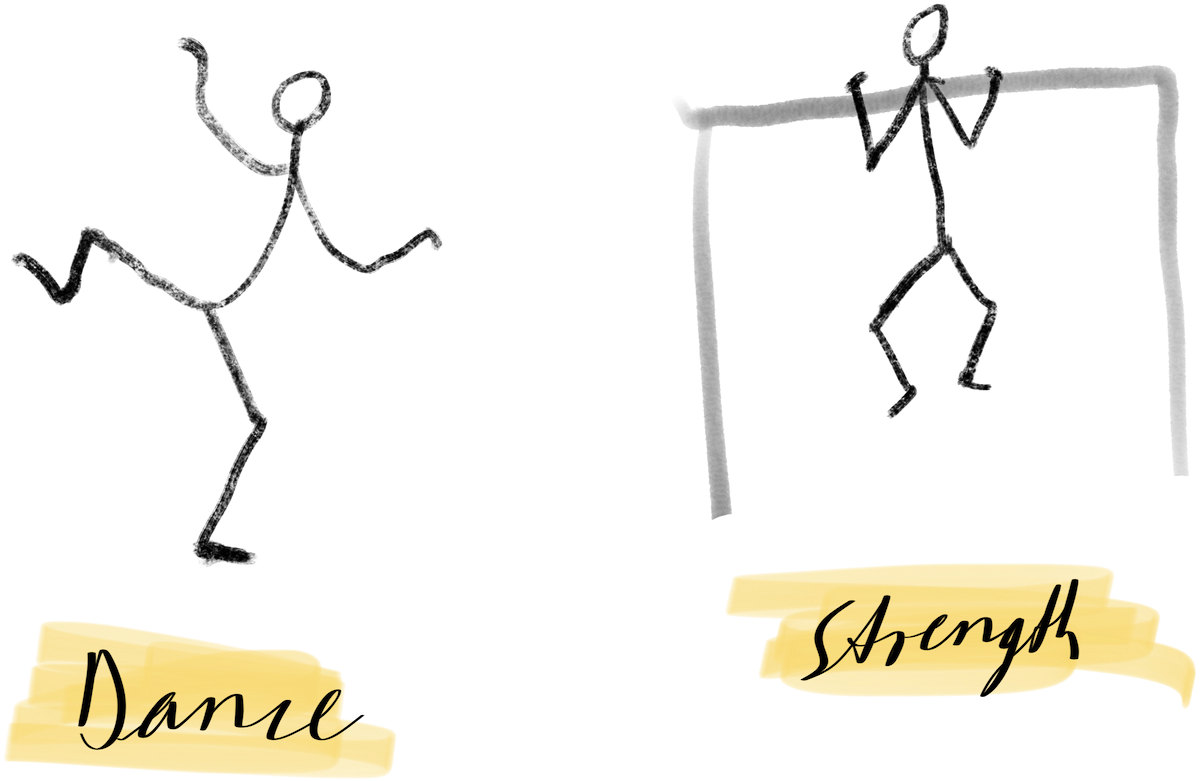
Third example:
- A) Use follow-alongs on YouTube with mobility, yoga, or strength workouts. Choose the ones that suit you, and do them several times a week. Anything from 10 to 45 minutes long.
- B) Take a long hike every weekend.
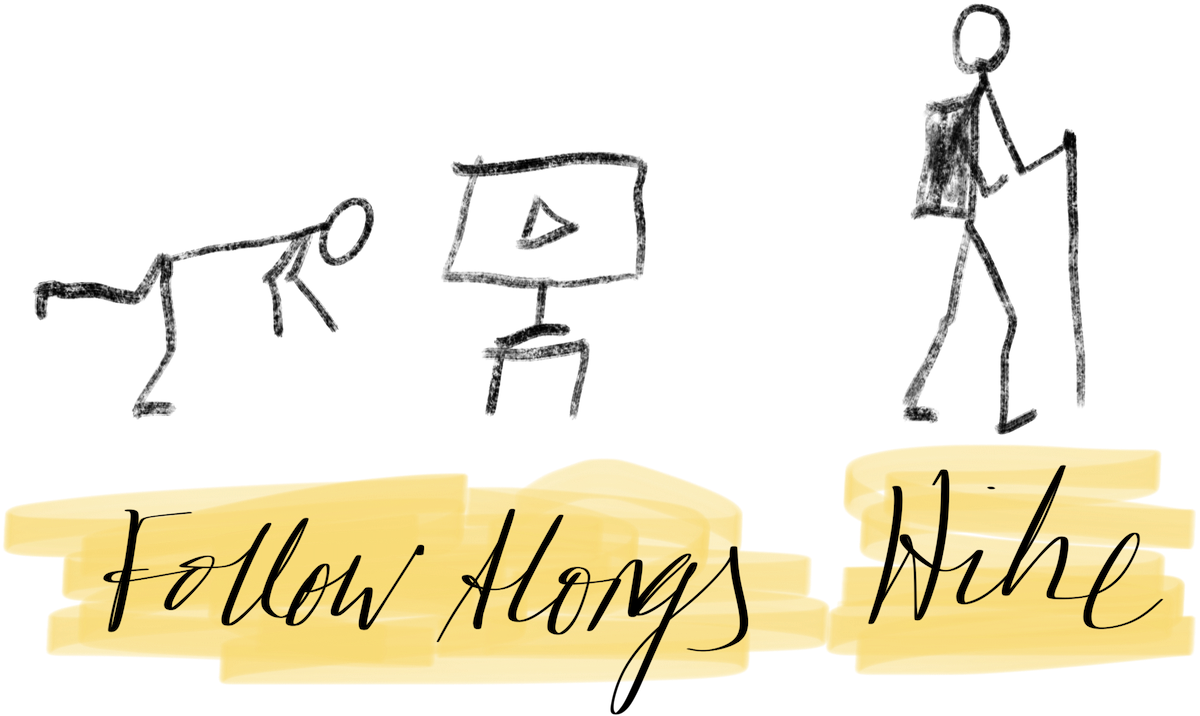
Fourth example:
- A) Join a Qigong group.
- B) Bike more regularly instead of taking the car or public transport.
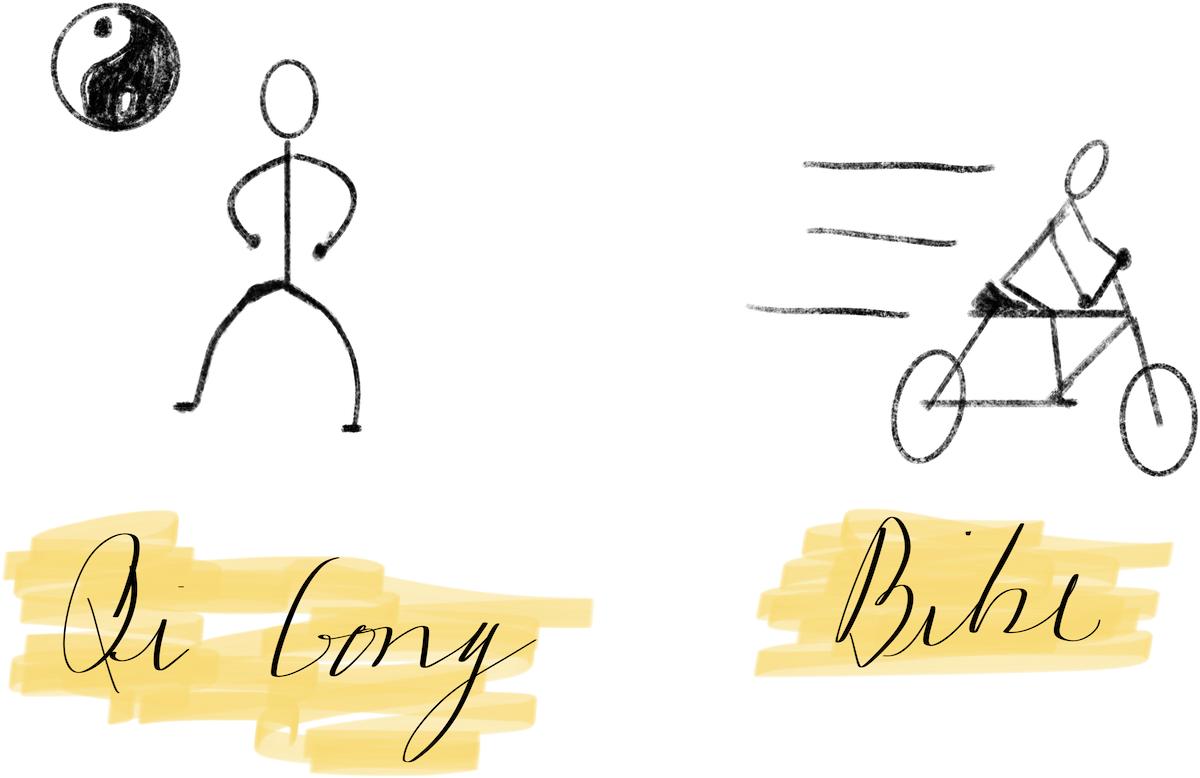
Fifth Example:
- A) Join a classic gym and use the machines.
- B) Take part in some of their classes.
- C) And make sure you walk at least 5,000 to 10,000 steps per day.
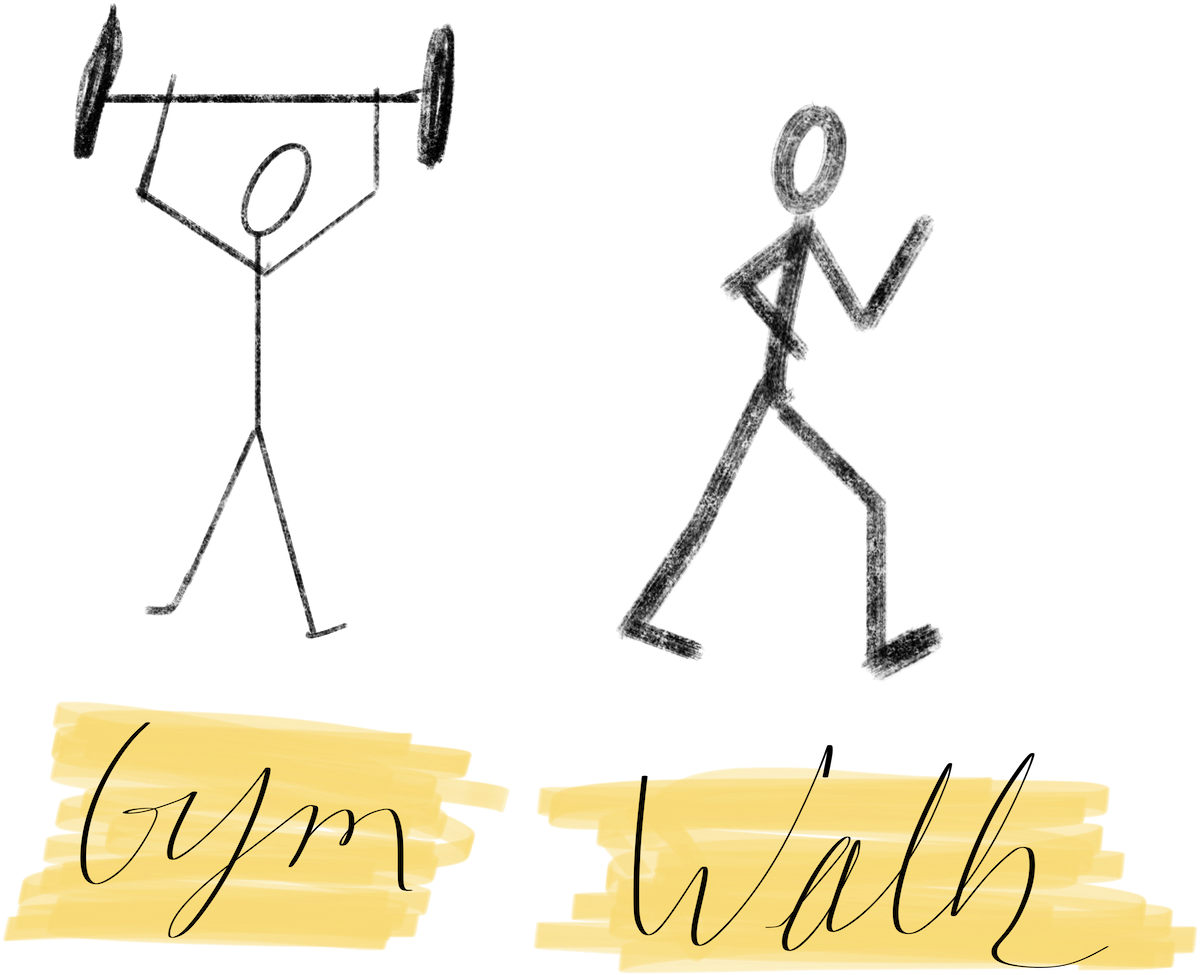
Anything
I can come up with a myriad of other examples. The idea is: start where you can start without too much friction. Make it easy and go.
Your practice will change completely with time, and what you did in the beginning might be abandoned entirely by you, but it was still a stepping stone on your path.
It is really "anything goes." If you feel you can do it, and you are currently not practicing anything movement-related, then start wherever you can start.
I suggest not locking yourself in too much. For example, don't just go to a gym and use the machines exclusively. Add some movement outside or at home. That way, your frame for practice is already more open, instead of being tied to one single spot. This will make it much easier to diversify later.
By the way, here I am assuming you don't have a practitioner nearby who is able to teach you the wide variety of the movement practice.
If you are fortunate and have a teacher or group nearby who works in the generalist way (there are now gyms and groups operating in this manner, at least in Europe, the US, and Australia), then I would recommend joining them if possible. However, for these examples, I imagine you are in a city in the middle of nowhere, where such specialists might not be available.
Anyway, you can start with just one, two, or three things at the beginning. Do them for three to six months. Establish a practice habit and enjoy the changes in how you feel and your abilities.
How much you improve depends on your ability to create a proper training stimulus, which differs from person to person. Some are more talented at that, others less.
Everything
From there, it makes sense to diversify and add another thing. Maybe that means stopping one practice, maybe reshaping it, or reducing it so you can add something else. Or maybe you actually have more time and can add something on top.
For example: you have been walking, doing yoga, and practicing push-ups and squats. Now it might be a good time to pick up a more structured strength training plan that allows you to progress properly, instead of always doing the same two exercises. Or maybe you do a little less walking but add some running or swimming. Or you start attending a Tai Chi class.
Remember: it is important to stay with things long enough. But at this stage, it is also important to experience different things. If you don't, you risk locking yourself in too early. And at some point, this can even "detrain" your openness—the ability to expose yourself to new experiences.
When it comes to experiencing and expressing yourself through movement, most people have never taken the "diversifying path". So, they are still left with a lot to discover (about themselves). The path is always still there to explore for you.
Your thing
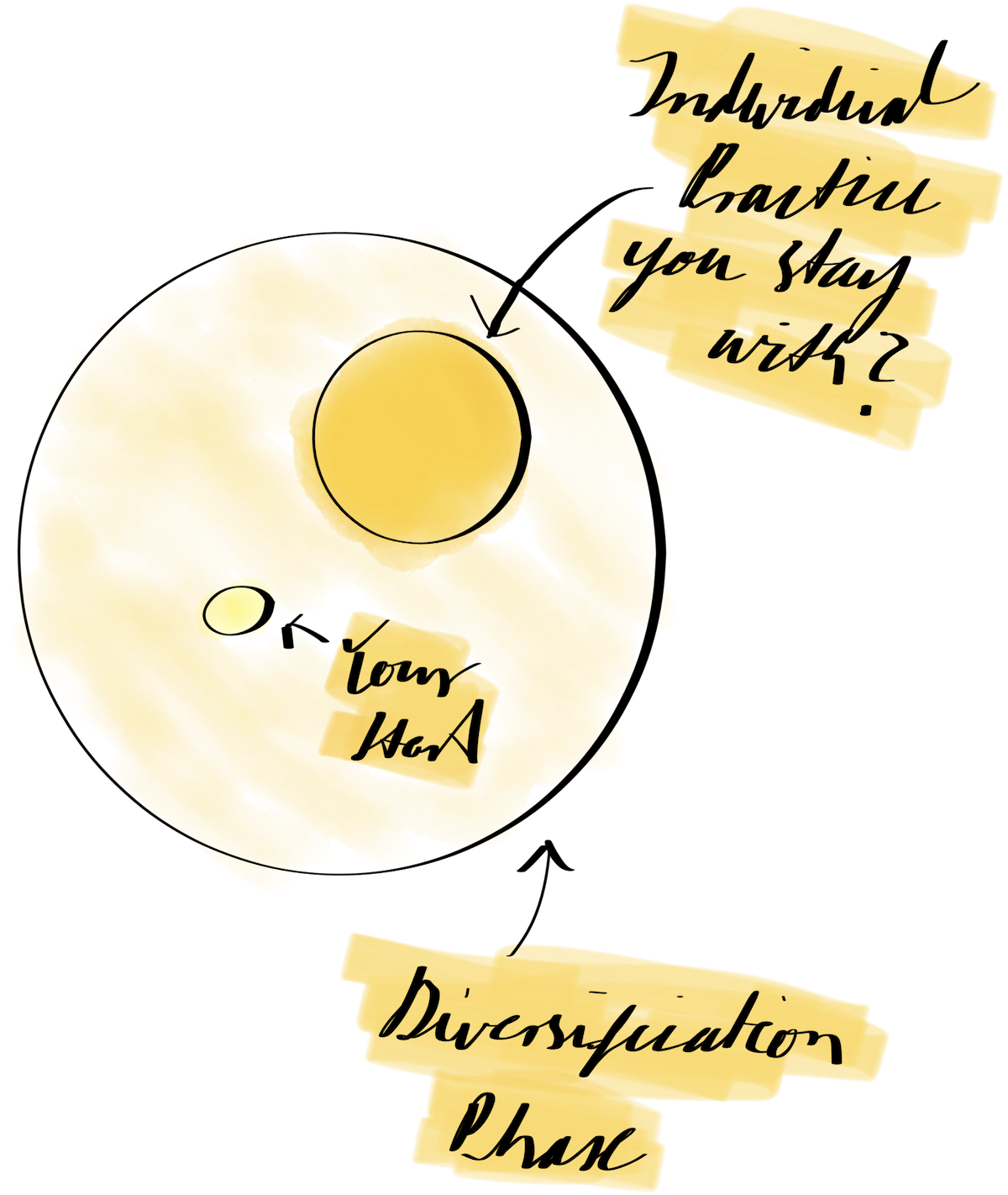
My hypothesis again: To find yourself, you should have different experiences. However, I would never vehemently defend this hypothesis. It is the approach that I propose. Some people find themselves without trying a wide variety of things. That happens as well.
If we approach the movement practice through the lens of diversification ("trying many different things") you will become a generalist practitioner. Someone who can participate in many activities, adapt quickly, and often shows a relatively high movement quality across the board. Such a person also tends to have a lower risk of overuse injuries. These are just some of the benefits.
So, let's say you have diversified and you have been doing this for several years. At some point, you may realize that certain practices truly stick with you. You feel a strong connection to them, and you want to continue with them. That is part of discovering your unique practice.
At the same time, you may notice certain practices that feel uniquely helpful. They might not be the most exciting things, maybe not the ones you look forward to every morning, but you realize they support you in essential ways. They might reduce the pains you carry, stabilize your emotional well-being, or bring balance to other areas of life. These also belong in your individual practice.
The point is this: your individual practice is not just built from the things that excite you, or the ones that come easily because of talent. It also includes the things that help you, the ones that truly support your path of self-discovery.
Discovering yourself is not easy. It is also not necessarily something full of hardship. It is simply something that has many different moments, times of ease, times of difficulty, times of joy, and times of struggle etc. All feelings are invited.
Examples from other Fields
The same applies beyond movement.
Take meditation, for example. One way to start, wherever you are, is to sit regularly and do nothing. Alongside that, you can download one of the many meditation apps. Some of them are very good, and by using them you are already exposed to different ways and styles. From there, maybe you pick up a book. Or you go to a retreat. Or you join a local group. Or find a teacher online. Or, or, or. The entry points are many, and the path will branch out as you go.
Another example from the world of crafting. Let's say you want to explore woodworking. You can begin with nothing more than a carving knife. Carve simple figures out of sticks—mushrooms, for instance, or a pawn from chess. Then maybe you get a saw and a hatchet. With a hatchet, saw, and carving knife, you might make a spatula. Add a hook knife, and now you are carving spoons.
Then, with some boards from the home improvement market, you build a shelf or a box. For that, you might need a drill and screws or some clamps and glue, and so on and so forth. YouTube alone holds an endless number of tutorials that can provide ideas. One by one, you broaden your experience with different types of wood, various tools, and various approaches to woodworking, such as carving or carpentry.
The process is the same: you start somewhere, almost anywhere, and through regular practice and curiosity, you gradually diversify. Eventually, over time, your practice becomes increasingly individualized.
Closing Thoughts
Self-discovery is a path of conscious exploration.
In the P.E.R.-Framework, I talk about the four paths of expression:
- - Physical and Mental Practice
- - Crafting
- - Art
- - Communication and Interacting
All of them can be approached with the "Anything → Everything → My Thing" process I outlined here.
The message is simple:
1. Just start anyhow.
2. Diversify from there.
3. Take your time.
4. Continue to explore.
And naturally, you will end up at your individual practice. All you need to do is keep exploring, stay present, and reflect on what you have done, so you can integrate it into your individual path.
Continue.
Joseph Bartz
2025